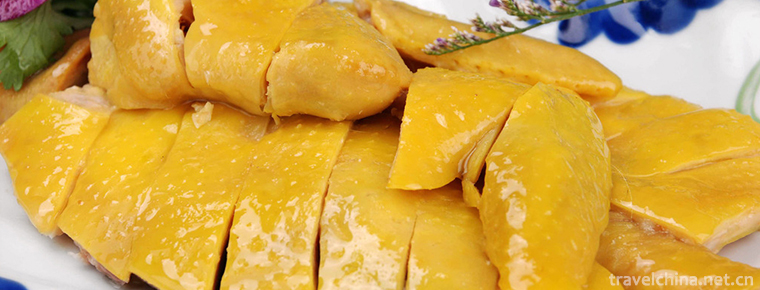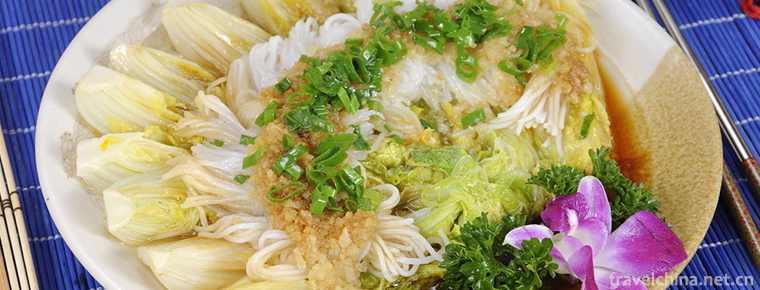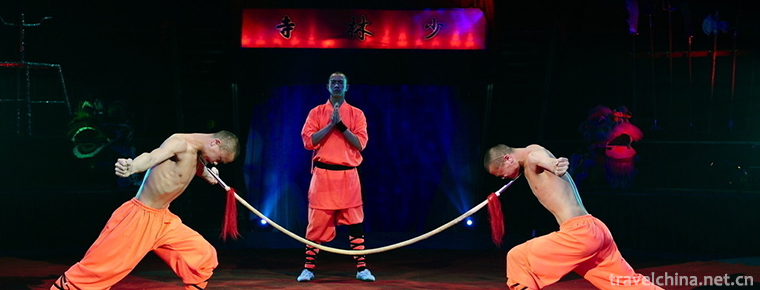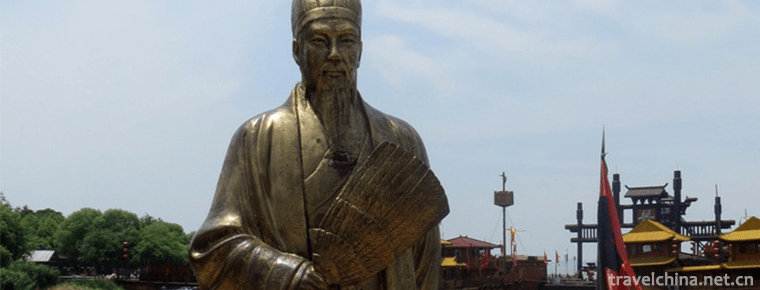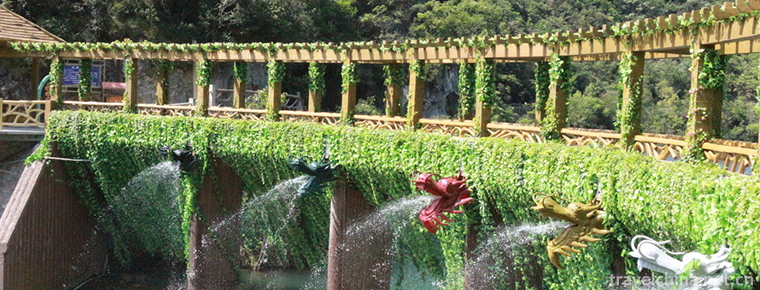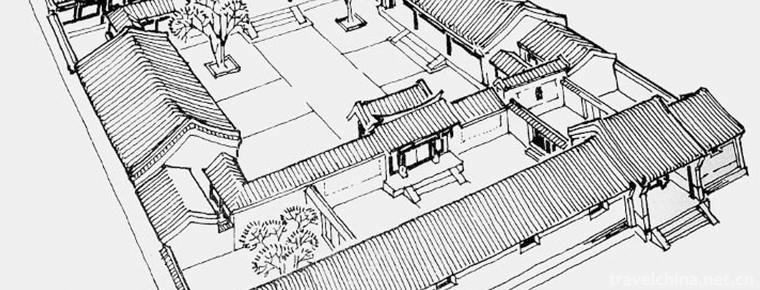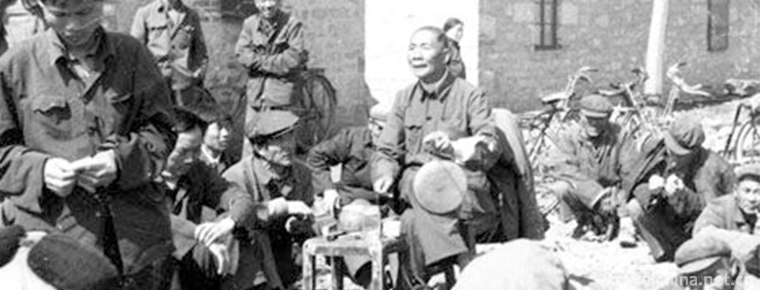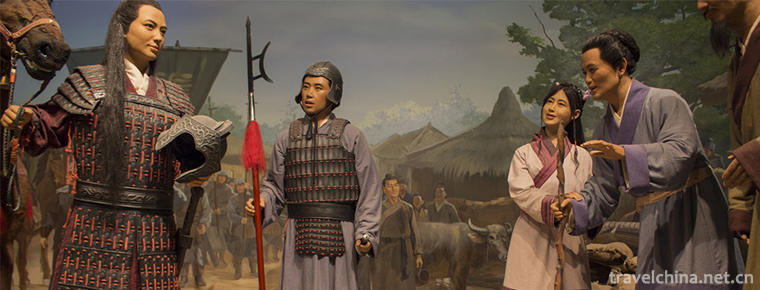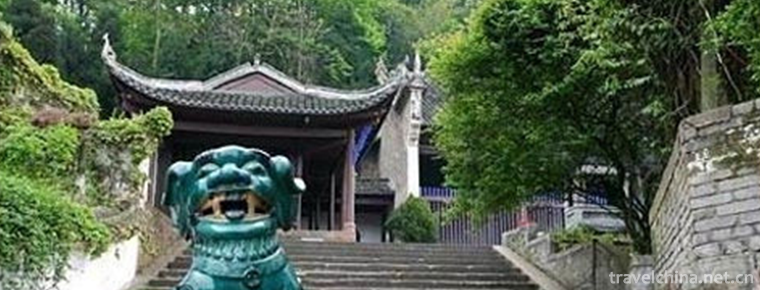Nanshan Cultural Tourism Zone
Nanshan Cultural Tourist Area
is located 40 kilometers southwest of Sanya City, Hainan Province. It is the
southernmost mountain in China. It belongs to tropical marine monsoon climate.
Its air quality and sea water quality rank the first in the country. Its forest
coverage rate is 97%. It is a large-scale park displaying traditional Chinese
Buddhist culture. Nanshan Cultural Tourist Area is a national AAAAA tourist
attraction, a national key scenic spot, a national demonstration site for
civilized scenic spots, an example award for Chinese residential environment, a
famous Buddhist mountain resort in China, a priority project for tourism
development in China, and a demonstration scenic spot for Ecotourism in Hainan
Province.
The main scenic spots in Nanshan include Nanshan Temple, Guanyin on the sea, No. 2 Famen, Guanyin Cultural Park, Tianzhu Sacred Site, Buddhist Scenic Spots and Landscape Garden, Shifang Tallins and Guigen Garden, Buddhist Cultural Exchange Center, Suzhai Shopping Street, etc. Among them, the 108-metre sea Guanyin is one of the worthy highlights, is the world's first statue of Golden Jade Guanyin Bodhisattva, known as the treasure of the whole island of Hainan.
Summary
Nanshan has always been called the land of auspicious and fortunate. According to Buddhist classics, Guanyin Bodhisattva, who saved suffering and distress, made twelve great wishes to save all living beings. The second one was the wish to live in the South China Sea. China's famous sentence "Furu East China Sea, longevity is better than Nanshan" has a long history of Nanshan and Fushou culture.
Nanshan is a rare and world-shaking Buddhist resort, which shows extensive and profound Buddhist culture and traditional Chinese culture everywhere.
Nanshan, facing the South China Sea, is located 40 kilometers southwest of Sanya, the only tropical coastal city in China. It is the southernmost mountain in China. Nanshan has always been called the land of auspicious and fortunate. According to Buddhist classics, Guanyin Bodhisattva, who saved suffering and distress, made twelve great wishes to save all living beings. The second one was the wish to live in the South China Sea. The famous Buddhist monk Jianzhen in Tang Dynasty made five unsuccessful journeys to Japan to promote Buddhism. He drifted to Nanshan for the fifth time. He lived here for one and a half years, built Buddhist temples and preached Dharma. Then he succeeded in his sixth eastward journey to Japan. Japan's first Tang monk, Kunghai monk, also landed in China, stopping to pass on the law. The well-known saying "Furu East China Sea, longevity is better than Nanshan" in China reveals the long-standing origin of Nanshan and Fushou culture. Nanshan Temple is also the youngest newly built Temple approved by the State Council for the first time after the founding of the People's Republic of China. Standing in front of the temple, you can see a few mountains looming in the clouds and mists. At this time, you will feel that Bai Juyi's poems "suddenly heard that there are fairy mountains on the sea, mountains in the empty space" are suitable for use here. On the sea, several light boats ripple in the microwave, depicting a Penglai fairyland pattern. Nanshan Temple is the most famous one of the most famous artistic treasures in the world, which is up to 38m and worth 192 million yuan. The world's first statue of Golden Jade Guan Shiyin Bodhisattva is due to its unique artistic charm and the unique artistic charm of Guan Shiyin Bodhisattva and Guan Shiyin Bodhisattva. Nanshan Temple is a rare Buddhist resort in the world, which shocks the world with its extensive and profound Buddhist culture and traditional Chinese culture everywhere.
Historical culture
Nanshan has always been called a place of good fortune and prosperity by Buddhists, and it is connected with many historical facts and legends. According to Buddhist classics, Guanyin Bodhisattva, who saved suffering and distress, made twelve great wishes to save all living beings, the second of which was to live in the South China Sea. The famous Buddhist monk Jianzhen of Tang Dynasty in China failed to make five East voyages to Japan in order to carry forward Buddhist Dharma. The Fifth East voyage drifted to Nanshan. He lived here for one and a half years and built Buddhist temples, preached Dharma and preached Dharma. Then he finally succeeded in his east voyage to Japan.
ecological environment
Nanshan is the southernmost mountain in China. It is a tropical marine monsoon climate with an average annual temperature of 24.5 C. Its air quality and sea water quality rank first in the country, and its forest coverage rate is 97%. Nanshan's natural environment and scenic resources have been fully protected and won the "China Habitat Environment Model Award".
The harmony of ecology and the edification of culture can satisfy people's need of expanding the spiritual world and inspire people to pursue more progressive value orientation even though people are subjected to imperceptible education while traveling mountains and rivers. This is Nanshan people's interpretation of "big education". The concept of "big tourism" advocated by Nanshan is devoted to creating a world-renowned cultural tourism scenic spot, so that the essence of traditional Chinese culture can be gathered and displayed here, and become one of the focus of attention of the world's tourists.
Introduction to scenic spots
China Fushou Cultural Park is a park that focuses on the essence of Chinese culture and highlights the atmosphere of peace, tranquility, happiness and peace. The South China Sea Customs and Culture Park is a park that utilizes the unique charm of the blue sky and blue sea, sunshine beach, mountain forest and sea reef in Nanshan area to highlight the natural scenery and harmony of the South China Sea. Licun Miao Village's culture and customs are compatible with some modern Western civilized parks. The main buildings are grass-skiing, sand-skiing, Li Miao style garden, mythological wandering world, Huangdaopo Memorial Hall, Ocean Park, undersea world, flower and bird paradise, etc. Nanshan Golden Jade Guanyin is composed of four parts: Golden Body of Guanyin, Buddha Light, Chiba Baolian and Rosewood Sculpture Base. Its height is 3.8 meters. It consumes more than 100 kilograms of gold, 120 carats of South African diamonds, thousands of rubies, emeralds, corals, turquoise, pearls and more than 100 kilograms of emerald and other exotic gems. It adopts traditional Chinese "court gold". Fine work "handicraft manufacturing". The Golden Body of Guanyin is made of more than 200 pieces of gold with an average thickness of 1.2 mm, which are manually hammered and welded. Due to the use of different processing methods, the gold image has produced different color and texture.
Nanshan Scenic Spot in Sanya is a "priority project of tourism development in China" determined by the National Tourism Administration. Located in the west of Sanya, the only tropical coastal city in China, it is a rare super-large cultural and ecological tourism park in China. The park has a planned area of 50 square kilometers, including more than 10 square kilometers of sea area. It is planned by the New York International Urban Design Company of the United States and provided by the United Economic Consulting Corporation of the United States with a feasibility report. The project contents are planned by the Chinese Buddhist Cultural Institute, the Chinese Folklore Society, the Chinese Museum of History, the Central University for Nationalities, the Chinese Academy of Environmental Sciences and the Eco-Center of the Chinese Academy of Sciences. This project is a key construction project in Hainan Province. At the same time, Nanshan Scenic Area in Sanya is the "priority project of China's tourism development" determined by the National Tourism Administration. Located in the west of Sanya, the only tropical coastal city in China, it is a rare super-large cultural and ecological tourism park in China. The park has a planned area of 50 square kilometers, including more than 10 square kilometers of sea area. It is planned by the New York International Urban Design Company of the United States and provided by the United Economic Consulting Corporation of the United States with a feasibility report. The project contents are planned by the Chinese Buddhist Cultural Institute, the Chinese Folklore Society, the Chinese Museum of History, the Central University for Nationalities, the Chinese Academy of Environmental Sciences and the Eco-Center of the Chinese Academy of Sciences. The project is a key construction project in Hainan Province. It has been awarded "Hainan Province Demonstration Project of Ecological Construction" and "Hainan Province Demonstration Scenic Area of Ecotourism" by Hainan Province. It has been highly valued by relevant departments of the central government, Buddhist circles and cultural circles. Its completion fills the gap of Hainan's historical and cultural tourism, further highlights the advantages of Hainan's great eco-tourism, and adds luster to China's tourism.
Nanshan has always been called a place of good fortune and prosperity by Buddhists, and it is connected with many historical facts and legends. According to Buddhist classics, Guanyin Bodhisattva, who saved suffering and suffering, made twelve great wishes to save all living beings. The third wish was to live in the South China Sea. The famous Buddhist monk Jianzhen of Tang Dynasty in China failed to make five East voyages to Japan in order to carry forward Buddhist Dharma. The Fifth East voyage drifted to Nanshan. He lived here for one and a half years and built Buddhist temples, preached Dharma and preached Dharma. Then he finally succeeded in his east voyage to Japan. "Yazhou Zhi" contains: "In the sixth year of Guangxu (A.D. 1881), Yazaitang village in Sanya (south foot of Southern Shandong Province) suddenly produced lotus flowers, with very luxuriant leaves and three years of Xie. Guangxu 23 years, resumed production, the more, so far more luxuriant. From this we can see that the difference between Nanshan and Buddhism is also the cause. In Shuinan Village at the foot of Nanshan Mountain, Huang Daopo studied Li brocade, opened a new era of textile industry, and continued the history of the Silk Road.
Nanshan Buddhist Cultural Garden faces the South China Sea, with thousands of blue waves, bright sunshine, rocky waves, water shining on the sky, and Zhao Pulao's Title "Haitian Jungle" is actually the phase of Haitian Buddhist Kingdom. The scenery here is unique.
On April 17, 1993, when General Secretary Jiang Zemin visited Nanshan Mountain, he was thrilled to write a couplet in the scenic spot entitled "The blue sea stretches far and the Qiongya is full of spring". When Guo Moruo came here in 1962, he praised the scenery of the scenic spot and the sea. In his poem Aoshan Mountain in Yaxian County, Guo Moruo praised it as "the Qidian of Nanming". (There is a mistake in this paragraph. The inscriptions of the two men should be in the Dongtian tourist area of Sanya.
Sanya Nanshan Cultural Tourism Area took the lead in implementing IS014001 environmental management system in the whole country, and became the first certified tourist area in China. With its outstanding achievements in ecological construction and environmental protection, it attracted worldwide attention. Here, people can not only enjoy the good ecological environment which can be restored, but also feel the good news brought by ecological construction and environmental protection to mankind, and enjoy the pleasure of returning to nature.
In December 2000, it won the title of national 4A-level tourist attraction. In September 2001, it passed the certification of ISO 9001 environmental management system.
On May 8, 2007, Nanshan Cultural Tourism Area of Sanya City was officially approved by the State Tourism Administration as a national 5A tourist attraction.
Scenic landscape
Buddhist Cultural Landscape: No. 2 Famen Golden Jade Guanyin Cihang Pudu Garden
The only proper course to take
In Buddhism, the norms of understanding things are called Dharma, and the saints who are well-trained are enlightened here, also known as doors. There are 84,000 Dharma Gates in Buddhism, and the two Dharma Gates are the highest realm. Entering this gate, we enter the sacred realm of Buddhism, and we can see the sacred way directly, that is to say, we have reached the realm of Nirvana beyond life and death. From the perspective of Buddhist philosophy, "no two" means "either one or the other", "all living beings are equal", "self-equality" and "equality of mind and Buddha". It is the method and concept of Buddhism to recognize all things in the world. It deduces and expounds the relationship between the essence and appearance of all things in the world.
Vimo Sutra records: Master Wenshu asked Vimo, "I have said it all. The benevolent should say, "How can a Bodhisattva enter the two Dharma Gates?" Vimalakirti should not be silent. Wenshu said, "Good, good. Even if there is no written language, it is the only way to get in.
The rhetoric is well-developed and the Zen Buddhism is deep, which requires careful understanding.
Nanshan No. 2 Famen is the gate landscape of the scenic spot, which is a style building of the Southern and Northern Dynasties. Tourists enter this gate and enter the auspicious and quiet Buddhist holy place of Nanshan. "No. 2" outside the gate and "Yi Shi" inside the gate were written by the late famous calligrapher Gu Tinglong at the age of 94. "One reality" corresponds to "no two".
Jinyu Guanyin
The world-famous "Golden Jade Guanyin" is enshrined in the magnificent "Golden Jade Guanyin Pavilion". This statue of Guan Shiyin is inlaid with Sakyamuni Sariko and is 3.8 meters tall. It consists of four parts: Golden Body of Guan Yin, Buddha Light, Chiba Baolian and Rosewood Sculpture Base. It consumes more than 100 kilograms of gold, 120 carats of South African diamonds, thousands of rubies, emeralds, corals, pine stones, pearls and more than 100 kilograms of emerald. Treasures, using traditional Chinese "court gold fine workmanship" handicraft manufacturing. The total value of Jinyu Guanshi Audio-visual is 192 million RMB. It is a statue treasure with national style and spirit of the times. It is a rare treasure in the history of contemporary arts and crafts and Buddhist statue art. On November 27, 1998, Jinyu Guanshiyin in Nanshan Scenic Spot of Sanya was recognized as the world's largest statue of Jinyu Buddha and was recorded in the 1999 Guinness Book. During the Sprinkling Ceremony of Golden Jade Avalokitesvara in 2001, 108 Golden Steel Sherleys were found in the image of Golden Jade Avalokitesvara.
Guanyin wears a Tianchuan on her head, a ribbon on her chest, a white lotus on her feet, a law enforcement device on her hands, and six ways of resolving the problem are boundless. The Golden Body of Guanyin is made of more than 200 pieces of gold with an average wall thickness of 1.2 mm, which are manually hammered and welded. On the crown, against the backdrop of more than 400 diamonds and sapphires, a white jade Buddha sat upright in the middle. Guanyin's face is like a full moon, jaws are closed and eyes are lowered, it appears calm, quiet, compassionate and benevolent; a 15mm Star Ruby is inlaid between the eyebrows; a pair of emerald eardrops adorn both sides of the head. Goddess of Mercy has eight arms and eight hands, each of which enforces the law: taking auspicious seals in front of him with both hands, purging all living beings; white lotus hand achieves all kinds of merits; diamond clutching hand destroys all enemies; silk rope hand rescues all living beings so that they can be secure; arrow hand makes all living beings form a good bond early; wisdom eye hand follows each other, magic power is limitless, pure bottle hand spreads sweet dew on all living beings. The backlight of the Guanyin image is a lotus petal. The pattern of Baoxianghua in the center of the backlight is filled with 1 640 thin gold filaments and 1 100 natural pearls form the outline of the petals. There are three pairs of vivid flying fairies on the top of the backlight. The middle is the fairy of Lifo, the next is the fairy of dancing and music, and the third is the fairy of scattering flowers. The three pairs of fairies are all shoulder-wrapped, with flowery skirts, presenting the auspicious atmosphere of the Western Paradise world. Chiba Pauline is carved from 52 pieces of white jadeite. Rosewood carved waist-tied beard base, deep color, dignified and simple, with Oriental charm. The whole work of Jinyu Guanshi Audio and Video is an ingenious transition of gold and jade, reflecting each other and integrating into one.
Thirty-three Guanyin Hall
The 33rd Guanyin Hall of Nanshan Temple is the largest and most exquisite indoor Guanyin group image in the world, which has been recorded in the Guinness Records of the Great World. Thirty-three Avalokitesvara Group is 50 meters long and 15 tons heavy. It has been carefully built by more than 130 craftsmen over four years. It is an amazing Buddhist event. The group images are made of the most advanced lacquer materials and the most advanced technology of gold-plating coloured pottery. They are vivid in shape, delicate in carving and lifelike. Buddha light shines, auspicious Nanshan.
Thirty-three Guanyin Hall is based on the beautiful legend that Guanyin Bodhisattva once "carried forward Buddhism through the Longnan Sea". According to the Buddhist Sutra "The Lotus Sutra of Miaofa" Guanyin Bodhisattva Pumen Pin, there are 32 manifestations of Guanyin Bodhisattva, excavating and creating Guanyin culture. Thirty-three Guanyin statues have different postures. According to the Buddhist Sutra Pumen Pin, it is recorded that "a good man, if there are all living beings in the land, should take the Buddha's body as his standard, and the Guanyin Bodhisattva is the Buddha's body." Goddess of Mercy, the most popular folk songgiving, shows up as a woman and holds a baby sculpture. Goddess of Mercy: Ask for dragons and phoenixes, and get what you want.
Dragon god five Hall
The Fifth God of Wealth Hall of the Dragon King is located in the Longmai Caixue of Nanshan Mountain, Sanya. It is dedicated to the Fifth Son of the Dragon King of the South China Sea, Shengyan, the Fifth God of Wealth in the World, the Fifth God of Wealth in the World. The Money Temple of the Fifth Master of the Dragon consists of three parts: one is the Grand Hall of Recruiting Money, which opens the audience to collect wealth and treasure; the other is the Treasury of the Palace, which protects the believers to keep money and protect money; and the third is the Treasury of the Palace. The Fifth Lord Ten Thousand Buddha Pavilion protects believers'fortune and wealth from generation to generation. The Hall of Recruitment of the Fifth Master of Dragon, the God of Wealth, opens the door for believers to seek wealth. There are eight pillars of wealth on the hall of the Fifth Master of the Dragon, which represent the eight ways that the Fifth Master of the Dragon reveals to all living beings how to seek wealth rightly. Only by following the Fifth Master's enlightenment and establishing the correct eight outlooks on wealth, can we achieve wealth satisfactorily. The Fifth Lord of the Dragon Temple of Wealth is of great scale and momentum. The main building is a two-storey palace with unique architectural style and exquisite decoration. From the outside to the inside, the level is clear and the layout is rigorous. The Temple of the God of wealth is now about 55 meters high. It is based on Buddhist plastic arts and combines traditional Chinese culture of the God of wealth. They are all in the form of wooden palaces, magnificent and magnificent. The architectural style of the temple reflects Chinese architectural art and folk culture. At present, it is the largest and most magnificent temple of wealth in the world.
Ci hang Pu Garden
Cihang Pudu Garden is a scenic spot with Guanyin culture as its content. It tells the story of Guanyin Bodhisattva's Pudu of all living beings, centering on Guanyin Bodhisattva's compassion and taking life and death as the main line to the world of bliss.
The main scenic spots of "Cihang Pudu Garden" are Guanyin Pavilion, Chenglu Pavilion, Dripping Water Clean Bottle, Ergen Round Stone Carving, 100-meter Corridor from East to West, Zhenqu Tea House, Jiayan Wall, Zhaojianbi, Sanjie Bridge, Zizhulin Forest, Free Life Pool, etc. "Jinyu Guanshiyin" enshrined in Guanyin Pavilion is the treasure of Zhendao in Hainan Province. Cihang Purdue Garden integrates the atmosphere of northern imperial gardens and the exquisite gardens of southern gardens. It skillfully stacks mountains and waters, entrusts the beautiful legends of Guanyin Bodhisattva in search of sound and rescue suffering, and makes people feel the broad and profound Buddhist culture and traditional Chinese culture.
Ruyi auspicious Garden
Ruyi auspicious garden scenic spot integrates Chinese classical gardens, Japanese gardens and Western European gardens. It integrates Buddhist culture and ecological culture, expressing the idea of harmony between man and nature and the idea of harmony between man and nature. The main attractions are Nanshan other courtyard, auspicious classical stone carvings, auspicious bells, eighteen Arhats, white pavilions, bent high by the net, pigeon farm, etc.
Nanshan Temple
Sanya Nanshan Temple is located in Sanya Nanshan Cultural Tourist Area. It is a large monastery imitating the style of the flourishing Tang Dynasty and living in the mountains and seas. Nanshan Temple is the site chosen by Zhao Puchu, the late president of the Chinese Buddhist Association. With the approval of the State Religious Bureau, it laid the foundation on November 11, 1995 and was completed on April 12, 1998. Existing imitation Tang Dynasty buildings such as Renwangdian Hall, Tianwangdian Hall, Bell Tower, Rotary Collection, East-West Climbing Gallery, East-West Matching Hall, Jintang and other buildings, with a total construction area of 5500_. The whole building is magnificent, the largest Buddhist monastery newly built in China in the past 50 years, and also the largest monastery in southern China. The abbot of Nanshan Temple is a 86-year-old senior monk and a new great monk. The prison is the Vice President of the Chinese Buddhist Association, Master Mingsheng. The second phase of Nanshan Temple project has been started. According to the planning and design, the second phase of the project follows the characteristics of the ancient large Buddhist monasteries, which are square and uniform, and have distinct primary and secondary features. The main buildings are assembled on the central axis and 12 quadrangles with different functions are set on both sides. After the completion of the second phase of the project, the whole Nanshan Temple is 188 meters wide in East and west, 416 meters long in North and south, with a total height difference of 49 meters and a total building area of 40,000 square meters.
The origin of Nanshan Temple
"Huayan Jing Entering the Dharma Section" says: "In the south there are mountain names to supplement Pyroga, and there are Bodhisattva's view of fame at ease." Pi Bodhisattva has the wish to live in the South China Sea for a long time. It was called Guanyin in the South China Sea. Because Bodhisattvas live in the Great Pessimistic Walk Gate, they are free to achieve, they are easy to travel, they are mature before they can be found in all living beings, even before they live together with them. Therefore, Guanyin Daochang is widely distributed in Putuo Mountain in eastern Zhejiang, and Gai Bodhisattva lives in the South China Sea and should be transformed into ten places.
China's Nanshan is on the coast of Hainan, and Sanya's Nanshan is the complement of Bodhisattva's permanent residence, as well as Daguang Mountain. Therefore, Qiongzhou has always said that Guanyin went out to patrol the South China Sea. Looking at the two islands on the side of Nanshan Mountain, it is said that the relics of Guanyin's selection of soil are the relics of Guanyin. During Tang Tianbao's reign, Buddhist monk Jianzhen, the ancestor of Lao Zong, was blocked from traveling to Japan five times. He landed in Nanshan and was supported by Guanyin. He succeeded in his sixth eastward journey. Later, Japan sent Master Hongfa, the ancestor of the Tang monk Dongmi, to seek the Dharma in the west. He was also blocked by typhoon to Nanshan, and was blessed by Guanyin. He achieved the Dharma in Quanzhou and Chang'an. The lotus flower is in the shape of Guanyin Bodhisattva's samaya, and its seed character is Qili, which shows the purity of the self-nature of the various methods as well as the human flesh and mass heart, like the eight-leaf lotus flower, and the noumenon is originally pure. "Yazhou Zhi" contains: "Six years of Guangxu (1881 AD), Yazaitang village in Sanya (south foot of Southern Shandong Province) suddenly produced lotus flowers, leaves are very luxuriant, three years is Xie. Guangxu 23 years, resumed production, the more, so far more luxuriant. From this we can see that the difference between Nanshan and Buddhism is also the cause.
Nanshan is situated in the south of Qiongzhou, with a mountain height of more than 500 meters. It resembles the giant ao. It was called Aoshan in ancient times. It is actually the phase of Guanyin Bodhisattva Cihangpudu riding. Mountains are verdant, surrounded by hills and clouds, with thousands of meteorologies. Facing the South China Sea, the blue waves are endless, the sunshine is magnificent, the waves are stirring, and the water reflects the sky. There is a Buddha kingdom in the sea and the sky, and the Bodhisattva takes in all sentient beings. In view of the requirements of the masses of believers, the time, the place and the people, and the maturity of the time, on the initiative of Mr. Ruan Chongwu, the Religious Bureau of the State Council of China and the Chinese Buddhist Association agreed that the Hainan Provincial People's Government officially approved the construction of Nanshan Temple in 1993 (2537 Buddhist calendar), and successively approved the construction of Nanshan Buddhist Cultural Garden on the side of the temple and in the sea in front of the temple. A giant bronze statue of Guanyin with a height of 1008 meters is sculpted. The mountains are adjacent to each other, with the ends of the earth on the left and the East China Sea on the right, and the Great Sadness Mandala of "Great Ecology, Great Culture and Great Environmental Protection".
Nanshan Temple covers an area of 400 mu and imitates the Tang style. It is built with Renwang Hall, Daxiong Palace, East-West Palace, Bell-Drum Tower, Rotary Collection, Fa Tang, Zen Hall, Zhaitang, Guanyin Court, Abbot-in-law Court, Peotian Court and so on. It is graceful, solemn and elegant. As the "Huayan Jing Entering the Dharma" says, "Springs linger, forests are lush, vanilla is soft, right-handed cloth, watching Bodhisattvas sitting on diamonds, infinite Bodhisattvas are sitting on precious stones, respectfully surrounded, and preaching the Great Compassion Method". This is also the main venue of the true Guanyin Bodhisattva's doctrine. The foundations of Nanshan Temple were laid on November 11, 2539 (1995) of the Buddhist calendar. The builders worked with sincerity and auspiciousness. Two and a half years later, the Daxiong Palace, the Douzhao Inner Court and the Renwang Palace were completed. Zhao Puchu, president of the Chinese Buddhist Association, wrote the inscriptions of Nanshan Temple and Haitian Jungle. It coincides with the year 2542 of the Buddhist calendar (A.D. 1998), which marks the year 2000 when Buddhism was introduced into China. Guanyin Southern Tour, Fayunnan Bei, held a grand congregation of blessings and blessings on April 12. Depending on Bodhisattva's blessing, universal support, builders of counselors, beneficiaries and recipients, all of them are free from the sea of great sorrow, infinite merits and virtues, and all of them turn back. I would like to start with the monument and announce that Nanshan Temple is built to carry forward the great tragedy. Living constantly, conceiving benevolent embryos, identical, humanistic return, free from obstruction, comfortable buds, go deep like Prajna, not to be overwhelmed, the Dharma will live forever, the daily glory of Buddha. The world is peaceful, China takes off, feeding and benefiting, and we must be compassionate.
Benevolent King gate
It is equivalent to the "three gates" in the general temples, and is the patron god of the temples. According to the records of the Buddhist doctrine that the King of Benevolence protects the kingdom of Prajharamido Sutra, the two Kings of Benevolence are named "the King of Benevolence" for their meritorious efforts in protecting Buddhism, so the Nanshan Temple is not called "the three gates" because they imitate the Tang Dynasty, but "the King of Benevolence" according to the two
Pocket courtyard
Dou rate is the boundary name or heavenly name, which is translated into foot, wonderful foot, contentment, satisfaction and so on. It is the heavenly place of desire for boundaries. Buddhism holds that the fourth of the six layers of heaven is divided into the inner court and the outer court. The inner court is the pure land of Maitreya Bodhisattva, while the outer court is the desire and pleasure of the heavens. Seven statues of Buddha are worshipped here. The Lord is Maitreya with the crown of heaven. The two Bodhisattvas are Damiaoxiang Bodhisattvas and Fayuan Lin Bodhisattvas. Four heavenly kings protect the Dharma around them.
Maitreya is a transliteration of Sanskrit, meaning Cishi. Maitreya Bodhisattva, named "Ayido", was a disciple of Sakyamuni Buddha, a Southern Tianzhu, who was later educated by human beings in the courtyard within the day of Taotao. According to Buddhist sutras, the teachings of Sakyamuni Buddha spread for 10,000 years. Since then, the morality of the world has gradually improved. Buddhism is no longer needed, and Buddhism has died out on its own. More than eight million years later, Maitreya Bodhisattva led the world to Buddhism. Heavenly crown Maitreya wears a tianchuan, also known as the five wisdom crowns. They represent the five wisdom of Buddha, namely, the Dharma wisdom of Pilujana Buddha, the Great Mirror wisdom of Oriental Buddha, the equality wisdom of Southern Baosheng Buddha, the wonderful observation wisdom of Western Amitabha Buddha, and the achievement wisdom of Buddha in the north. The image of Heavenly Crown Maitreya shows that Bodhisattva is speaking, his gesture is saying seal, sitting posture is free gesture, that Maitreya Bodhisattva is very comfortable in the courtyard, without any pain and trouble. The inner courtyard also expresses Bodhisattva's mind to all living beings. He has an urgent desire to come to the world as soon as possible to cross all living beings, so he has come down with one foot. The right and left servants are the Great Miracle Bodhisattva and the Fayuan Lin Bodhisattva. They stand beside Maitreya and help Maitreya speak for the heavenly people. The three Buddha statues are carved on both sides. They are 32 different images of karaoke heaven. They worship Maitreya Bodhisattva with incense, flowers, lamps, candles, fruits, tea, food, jewelry, clothes, songs, dances and various musical instruments.
Four heavenly kings guard the law around them. The Eastern King of Heaven, named Tidoroza, can protect the land; the Southern King of Growth, named Pilu, can increase the good roots of others; the Western King of Wide Eye, named Piliu Bofork, can protect the people with a clear eye; the Northern King of Heaven, known as Pishamen, can protect the wealth of the people. The Four Heavenly Kings are known as the Four Kings. This is just a play in The Romance of Enfencing the Gods. The Kings and the Kings are not to be confused.
Jintang
That is, Daxiong Palace, which was called "Jintang" in the Tang Dynasty, has a historical allusion of "Buddha Statistics": Emperor Ming of the Eastern Han Dynasty "Golden Man Dreaming at Night, Seeking Law by Feeling Dreams". Daxiong Palace is the main hall, or hall. Daxiong means to praise Sakyamuni Buddha's superiority. "Daxiong" means the wisdom and power of Buddha. The main worship here is the space-based Heng III Buddha, that is, the middle "Sakyamuni Buddha, Sava World Religion Master", sitting in a shaky way (reading jiafu, sitting cross-legged, with the back of the foot on the thigh, which is a kind of Buddhist sitting method), which is the face of Buddhism. On the left side, "Buddha, the Buddhist pharmacist master of the Eastern Pure Glass World", sitting in a shaky way, with the medicine in his left hand, and on the right. Hand stamp shows that Buddha is telling all living beings not to fear life and death. Buddha's wisdom can help all living beings overcome the worry of fear of life and death. On the right side, "Amitabha Buddha, the Buddhist master of the Western Paradise World" (Amitabha translated into Chinese as unlimited life), knots and knots the seal of Amitabha, which means to attract all living beings. There are sixteen Arhats around.
Sakyamuni Buddha is the head of Buddhism. Two thousand and five hundred years ago, a prince of the Sakyamuni people in India became a Buddhist monk and established Buddhism, so it is called Sakyamuni Buddha. Sakyamuni Buddha statues have different postures, there are two main types: one is staggered sitting: the left hand crossed the left foot called "stamp", which means meditation; the right hand straight down, called "touch the ground seal", which means that Sakyamuni sacrificed his head and brain for all living beings in the past before he became a Taoist. Only the earth can prove that, because these are all things done on the earth. This pose is called Chengdao phase. One is staggering: the left hand is crossed on the left foot, and the right hand is flexed upward to make a ring called "Fa Fa Yin". This is Fa Fa, which means the posture of Buddha's Fa Fa. There is another statue, left hand drooping, right arm bending upward stretching, this is called the "zhan" sandalwood statue, legend is that the Indian King Youdun used the sandalwood according to the Buddha's description when the Buddha was alive. Dropping the name of `and the seal of wishes', the table can fulfill the wishes of all living beings; extending the name of `Shi Wudao seal', the table can eliminate the suffering of all living beings. Later, it was also called Pandan Buddha.
Generally, there are two statues of monks beside the statues of Sakyamuni Buddha. They are one year old and one year old. This is the successor and disciples of the Buddha's Buddhist disciples after the Buddha's Nirvana. Later generations are called the primitive ancestors. After Gayennepan, Ananda succeeded his disciples, and later generations were called second fathers. Sakyamuni Buddha is commonly known as Tathagata Buddha. This is wrong, because the Tathagata and Buddha are the generic names of all Buddhas, and it does not mean that they are a Buddha, for example, if you call them Sir, you cannot say that they are someone.
Sea Avalokitesvara
Nanshan and Guanyin are
superior because of their predestination. Guanyin Bodhisattva has twelve
wishes. His second wish is "to live in the South China Sea", so it is
called Guanyin of the South China Sea. Nanshan is situated on the coast of the
South China Sea. It resembles Giant Ao. It was called Ao Mountain in ancient
times. It has the face of Guanyin riding. Qiongzhou has always said that
Guanyin travels to the South China Sea, where Guanyin Bodhisattva seeks to
rescue suffering, and the virtues of transcending all living beings are praised
by the children. The two islands of Dongbao and Xibao on the side of Nanshan
Mountain are said to have fallen from the earth when Guanyin heard the sound of
rescue.
In 1993, the Religious Affairs Bureau of the State Council of China and the People's Government of Hainan Province officially approved the construction of Nanshan Temple and the statue of Guanyin, 108 meters high, in the sea in front of Nanshan Temple. In 1999, on September 19, the lunar calendar, Nanshan grandly held the commencement ceremony of the "Nanshan Sea Guanyin" reverence construction project. The project lasted six years and was completed on 15 April 2005. A grand opening ceremony was held on 24 April 2005 (March 16, the birthday of Quanti Bodhisattva).
Because of its magnificent scale, great significance and rich Buddhist theory, the Nanshan Sea Guanyin Holy Statue Respect Project in Sanya has been praised as a "world-class, century-class" Buddhist project. The statue is an integrated three-deck model of Guanyin, with solemn treasure, 108-petal lotus throne on foot, under which is the King Kong Platform. Within the King Kong Platform is the Yuantong Palace with an area of 15,000 square meters. King Kong Chau is connected with the land bank by the 280-meter-long Puji Bridge, and with the Guanyin Square and theme parks on both sides of the Square, which covers an area of nearly 300,000 square meters.
South China Sea Guanyin also fully uses high-tech techniques, combined with sound, light and electricity technology for large-scale lighting night scene demonstration, fully demonstrating the cultural and artistic effects of "Buddha's light shining" and "traveling to the sea".
Interpretation of Guanyin in Nanshan Sea
Guanyin Bodhisattva represents compassion in Buddhism. It mainly assists Amitabha Buddha in the Western Paradise World to receive his life and helps Sakyamuni Buddha to enlighten in the Sava World, that is, in the real world.
Avalokitesvara Bodhisattva can present many wonderful features and can say infinite secret magic spells. The magic spell can make all living beings fearless. Believers honor him as a fearless giver. The main body of Guanyin Bodhisattva is Guanyin, which is called Zheng Guanyin. There are many incarnations corresponding to the subject, the earliest of which is the Six Avalokitesvara which corresponds to the way of the reincarnation of all living beings. Dutian Tao is the ideal wheel Guanyin, Duren Tao is the quasi-Goddess of Mercy, Duxiu Tao is the eleven-sided Guanyin, Duhu Tao is the horse-head Guanyin, Duhell Tao is the Holy Guanyin, Duhungry ghost Tao is the thousand-handed thousand-eye Guanyin. There are 32 Guanyin in accordance with the vitality of all living beings. There are 48 Guanyin and 84 Guanyin in manifestation.
Nanshan Sea Avalokitesvara Sacred Images are designed as three integrated models of Guanyin. From the front of each one, it is a Guanyin Sacred Images. Only when surrounded by a circle can we see the panorama of the three Guanyin Sacred Images with different gestures. The holy image of Guanyin in Nanshan Sea is the comprehensive embodiment of the avatar of Guanyin and the method of Guanyin. In the hands of the three Avalokitesvara, they hold pearls, lotus and bamboo slips with different meanings: on the front, they hold bamboo slips and bamboo slips, reflecting the wisdom and virtue of Avalokitesvara. The scriptures represent 600 volumes of Prajna Sutra, which means that Guanyin can be self-interested, see the situation without hindrance, and be at ease. It can also be altruistic, see the opportunities of all living beings and make them more at ease, so as to enlighten the wisdom of all living beings. On the right side is Guanyin holding the beads, which embodies the liberation virtue of Guanyin, i.e. getting rid of ignorance and all kinds of restraints, reaching the realm of freedom and freedom, and expressing the compassionate spirit of "all living beings chanting Buddha, Buddha chanting all living beings". On the left is the hand-held Lotus Guanyin, which embodies Guanyin's moral integrity. Guanyin is the priest of the lotus Department of the Mizong Sect, and the lotus is the samaya shape of Guanyin, which means the four virtues of "Changle I Jing". It is the sacred flower in Buddhism, symbolizing the flesh and mass of all living beings, the lotus body is pure, the mud is not stained, the root and stem are connected with the heart, symbolizing "the heart and Buddha, all living beings, three are indifferent". Generally speaking, it represents the purity of Guanyin and the six roundness of Guanyin.
These three Guanyin methods are infinite. They are mind, wisdom, peace of mind, three-dimensional, internal, Taoist, rational, empty and true. Holding lotus is a color, a state, a journey, a manifestation, an exterior, a monk, a dependence, a meaning and a common sense. Holding pearls is a wonderful view, then the color of heart is the same, the board of directors is not hindered, there are two empty, true and vulgar blend. These three Guanyin, pure body, mouth and mind, break the three confusions of "seeing, thinking, dust and ignorance", clear the three concepts of "emptiness, falsehood and middleness", and have the three divisions of "sound and news, sense of fate and Bodhisattva", which are the three divisions of "vajra boundary, fetal Tibetan boundary and Su Xidi", and testify to the three wisdom of "all wisdom, all kinds of wisdom and all kinds of wisdom".
The holy image of Guanyin generally expresses the image of great mercy of Guanyin, which is "great mercy and joy of all living beings, great compassion and bitterness of all living beings". If the Statue of Liberty represents the thoughts of "freedom", "equality" and the pursuit of individual emancipation in the Western world, then the Guanyin Holy Statue in Nanshan Sea is the spiritual symbol of "compassion", "wisdom" and "peace" in the Eastern World.
The sculpture design of Nanshan Avalokitesvara on the sea concentrates on the classics of the statue art of various times, and combines them skillfully to form an artistic image with a strong sense of beauty. Its clothes fluttered like elegant clothes, its face was compassionate and solemn, as if stepping on the sea, to spend all living beings out of misery, the overall image of the people at first sight and respectful heart, is the perfect combination of "truth, goodness and beauty".
The sculpture design of Guanyin Holy Statue in Nanshan Sea not only conforms to Buddhist doctrine, but also reflects the great mercy image of Guanyin's unrelated kindness and compassion of the companion. It also has the characteristics of the times of aesthetics, architecture, sculpture, Buddhist statue art and science and technology in response to the changes of the information age.
Wu Limin wrote this article in the year 2543 of the Buddhist calendar (A.D. 1999). Guanyin Fa Yao, as I heard, praised it with respect.
Three Respects of the Integration of Guanshiyin in Nanshan
Holding lotus, keeping body clean and holding pearls to relieve one's mind
Holding a bamboo slip is like a perfect way to achieve endless success.
Eight Knowledge Transfers Four Intelligences, Three Virtues and Five Yins
Miaoyin Guanshiyin, Fanyin, Haichao Yin
Seeing rites and celebrating Incantations
Fushou Cultural Landscape: Longevity Valley | Longevity Corridor | Prayer Tree | The First Inkstone in the World | Fanzhong Garden
Longevity Valley
Longevity Valley, also known as Aoshan Shougu, is located at the foot of Southern Shandong Province. Its landform is valley-shaped and extends vertically according to the climbing trend. The valley line is 2300 meters long, which can be called a wonder of tropical rainforest. In the meantime, birds sing constantly, streams run long, forests are lush, rocks are abrupt and peculiar. Designers skillfully use natural form to win, from different angles, to "flow" and "static" state reveals the core of the traditional "longevity" culture, blending the "longevity" culture in the tropical rainforest wonder. Its main landscapes include "immeasurable life Buddha" and "flowing water respector". The giant stone carvings of "Shoubi Nanshan" written by the famous calligrapher Qigong, the "centenary-old stage" and "He Shoutang" all reflect the beautiful prayers for happiness and longevity in Chinese traditional culture. It is a must-see attraction for elderly tourists.
The four words "Bieshan Shougu" in the archway are the topic of Mr. Wu Dongmin, Chairman of Hainan Book Association. Why is it called Bie Shan Shougu? Legend has it that when Guanyin rode on a giant turtle to the coast of the South China Sea, he found that this is Fudi Dongtian, outstanding people and spirits. People here live for a long time. So the giant turtle drank freely on the coast of the South China Sea and lay on the ground, forming today's Nanshan. From the plane overlooking Nanshan, Nanshan is a turtle-like animal. Spring water slowly flowed down at the foot of Nanshan Mountains, watering the land under Nanshan Mountains. People who drink Nanshan soil and water are longevity people. So we made this catchment valley line into longevity valley, which forms today's Bieshan longevity valley. Setting up sales points in combination with the entrance to provide tourists with life battles, mascots, souvenirs and other services. The inner side of the gate is enclosed by the longevity cultural monument corridor, forming a unified longevity cultural activity square.
Two stone carvings of Fuhai Shoushan and Songhe Yannian, Dade Bishou (inscribed by Chen Zuo Huanglao, a master of Chinese calligraphy and seal carving), Huangfang's poem of Nanshan in Ming Dynasty, "Trionyx on BieShan", the seal of Fushou composed of strange words, the picture of Lifetime and the three couplets matching the cultural landscape of Nanshan are arranged in the longevity corridor. From ancient times, modern times, literature, calligraphy and seal carving, the longevity culture is displayed.
There are three conjoined stone turtles beside the main entrance. They are three generations of ancestors and grandchildren. They inspire people to cultivate the traditional virtues of respecting the old and loving the young.
Wuliangshou stone inscription is the longevity character of Liu Bingsen, vice chairman of the Chinese Book Association. It is 4 meters high. Pavilions and corridors are built beside the boulders, from which tourists enter the valley.
In order to dig deeply into the connotation of Chinese traditional "longevity" culture, fully display its historical value and long-term vitality, and further enrich the local folk culture atmosphere, a large-scale natural landscape park "longevity valley" with tropical rainforest characteristics and novel design and unique creativity, with longevity culture as its theme, is located in Nanshan Cultural Tourism Zone. Built in 1999, the first Longevity Culture Festival in Nanshan, China was officially opened to tourists.
Longevity Gallery
Nanshan is the southernmost mountain in China. Purple air comes east, auspicious clouds are shrouded, Lin Cuishan is quiet, and waves are beating the shore. It has a tropical marine monsoon climate with an average annual temperature of 25.4 degrees Celsius. Air quality and sea water quality rank first in the country. The negative ion content in the air is 5000/cm3, the visibility of sea water is more than 7m, and the forest coverage rate is 97%. There are many exotic trees and flowers all the year round. They are purple and red, green and green. They are known as the world's Taoyuan and the Vatican Pure Land. Nanshan is famous for its Lao pine. Fuze land, nurturing thousands of ancient trees; Shenzu Mountain, numerous ancient spirits. Native plant Nanshan is not old pine, is the longevity star in the forest, centuries long, tree age up to thousands of years, the famous sentence "longevity is not old pine than Nanshan", spread for thousands of years.
Nanshan is a world-famous longevity area. The results of the national census show that the average life expectancy of Hainan Province is the highest. The average life expectancy of Sanya City is the first in Hainan, and Nanshan is the longevity top in Sanya. According to statistics, there are 2400 people in Nanshan village, the main residents are Li compatriots, including 8 centenarians and more than 100 longevity elderly people over 90 years old. Longevity Gallery displays some pictures of local longevity elderly people. Nanshan Cultural Tourist Area sincerely wishes you all good luck, longevity is better than Nanshan Mountain!
The Blessing Tree
People can enjoy roaming in the "turn of the clock" garden, which is to feel the ecological miracle and experience the auspicious culture. They can also hang prayer cards on the tree tops of the prayer tree to express their pursuit of the future, pray for tomorrow, and bless their relatives and friends.
Van Chung Garden
In the Northern and Southern Dynasties, due to the need of Buddhist development, the Buddhist bell of Dharma and Instruments was born on the basis of the old clock of China. Buddha bells adopt the form of positive circle cross-section, because it can make the bell sound more melodious and long, to meet the long-term needs of Buddhism's "all evil, all good practices" and "knowing grace and repaying grace". In the future, Tao bell, telegraph clock and Chao bell all adopt fixed Buddha bell.
After the Tang Dynasty, the leading role of the development of Buddhist bells in China was obvious. The Yongle Bell in the Ming Dynasty was an outstanding representative of Buddhist bells and even ancient Chinese bells. So far, the Chinese bell is not a simple practical bell, but a symbol of thought, culture and spirit.
Nanshan Buddhist Cultural Garden has collected thirty-nine ancient bells of Ming and Qing dynasties from the people, and has respectfully cast three imitation Tang bells of "peace", "repayment of grace" and "prayer". Forty-two bells are in harmony with the "forty-two wishes" of Guanyin Bodhisattva. "Fan Zhongyuan" grand bell wishes world peace, prosperity and strength of the motherland, wishing all guests a happy family, good luck.
Ecological Cultural Landscape: Nanshan Tree House | Ecological Sand Bar | Xiaoyuewan
Nanshan tree house
Nanshan Buddhist Cultural Garden has the world's rare coastal sand bar, which is also a rare wonder of the world. American Hawaiian Tree House Company has invested in the construction of several tree houses, which are like bird's nests. They are unique, natural and impressive. Tourists are among them, listening to insects singing birds singing, listening to the bell sounds of the waves, and tasting the sea breeze and forest charm.
Ecological sand dam
Nanshan Buddhist Cultural Garden has the world's rare coastal sand bar, which is also a rare wonder of the world. American Hawaiian Tree House Company has invested in the construction of several tree houses, which are like bird's nests. They are unique, natural and impressive. Tourists are among them, listening to insects singing birds singing, listening to the bell sounds of the waves, and tasting the sea breeze and forest charm.
Xiaoyue Bay
Nanshan Yuewan Road is a colorful tourist passageway between Nanshan Temple and Xiaoyuewan. It is near the mountain, remote and mysterious. The primitive ancient wooden boulders are well protected. The sea corridor leads to the exquisite pavilions on the reefs. The animals and birds fly in the tropical rain forest blown by the sea wind. It is a wonderful tropical coastal scenery.
Humanistic Landscape: Lefang in Han and Tang Dynasties
Han and Tang music clubs
The newly established Nanshan Women's Hantang and Tang Lefang in Nanshan Cultural Tourist Area is composed of 14 girls with an average age of 19 years and an average height of 1.62 meters. It is a graduate of Heilongjiang Academy of Arts and Performing Arts. Among them, Erhu, Gaohu, Zhonghu, Yangqin, Guzheng, Da, Zhongruan, Pipa, Bamboo Flute (Xiao) and Suona. One person, two percussion players. "Nanshan Women's Han and Tang Music Workshop" is directed by famous experts from the Department of Chinese Classical Han and Tang Dance, Hainan Song and Dance Troupe, Hainan National Orchestra Association and Hainan National Orchestra of Beijing Dance Academy. It takes classical music of Han and Tang Dynasties, Buddhist music and classical dance as elements, and makes classical music Chinese beautiful melody and modern music. Influential rhythm skillfully combined to deduce a set of music, dance, martial arts into one of the "classical fashion music", telling the world one after another old and legendary stories, with ornamental, intellectual, interactive, Nanshan is an excellent human landscape.
Buddhism is a belief system that promotes the quality of human life and the realm of spiritual and cultural life. It plays an active role in maintaining social peace and stability. Since the Han and Tang Dynasties, Chinese Buddhist culture has developed rapidly, with extensive and profound contents and colorful forms. It is a brilliant chapter in the history of Chinese culture.
Nanshan Art Troupe established the Hantang and Tang Music Workshop, which takes the classical music, Buddhist music and dance of the Hantang and Tang Dynasties as its main elements to create a large-scale literary and artistic program that integrates music, dance and martial arts. It is the basic idea of the special performance entitled "Hantang and Tang Music Workshop".
Yushi Yunifang, Nanshan
The owner of Nanshan Yushi Lunifang is Ms. Yu Xianglian, a master of Chinese arts and crafts. She was born in a clay family and was influenced by clay sculpture art from her childhood. Simple, honest, vivid, and exaggerated
Du is the artistic feature of her clay sculpture.
The clay sculpture artistic products of Nanshan Yu's Luannifang represent harmony, happiness and beauty. There are more than 50 souvenir shops and the best way in Nanshan Cultural Tourist Area.
Commodity Street, Nanshan tourist souvenirs have profound cultural background, outstanding artistic style, a wide variety of forms. There are thousands of varieties of Buddhist cultural and artistic works, folk arts and crafts. In particular, souvenirs with Nanshan landmark and national characteristics, such as Nanshan clay sculpture "Hehe Meimei" and Nanshan pyrographic art gourd, are handed down from generation to generation and collect fine works.
Gourd square
Hulu, homophonic "Fu Lu", is naturally beautiful. The ancients believed that it was a mascot, dispelling evil and praying for happiness. The gourd craftsmanship reached its peak in the Qing Dynasty. Emperor Qianlong praised the gourd craftsmanship as "simple in shape, better than gold and jade."
On the basis of "fire ember technology", Nanshan Hulufang pushes the traditional gourd crafts to a new realm and creates works of characters, landscapes, flowers, birds, animals and animals on the surface of gourds with iron instead of pen. Nanshan gourd, with smooth lines, vivid shape and profound artistic conception, has become a simple, natural and elegant exquisite folk art. It is not only a good gift for relatives and friends, but also has high collection value.
Practical information
Admission ticket
Adult tickets in peak season are 150 yuan, adult tickets in off season are 126 yuan (price in 2014, off season is usually the hottest month in each year, price changes every year); children under 18 years old, students, 60-70 years old people can enjoy preferential tickets with valid certificates; children under 1.2 meters old and people over 70 years old are exempted from valid certificates. Jinyu Guanyin sells tickets independently: 20 yuan.
Opening Hours
From 8:00 to 18:00, special holidays will be adjusted.
Best travel time
Nanshan Cultural Tourist Area is a tropical marine monsoon climate with an average annual temperature of 24.5 C. Its air quality and sea water quality rank the first in the country. Its forest coverage rate is 97%. The best tourist season is summer.
Taboo in Nanshan Temple
It's better not to take pictures with the Buddha statue, even if you take pictures, don't let the Buddha statue be directly above you. When confronted with a monk master, he can greet him with his hands together and gently call "Amitabha Buddha" until he leaves. Monasteries are usually Left-in and right-out. When burning incense to worship the four gods and Buddhas, you should first face the nearest Buddha.
Best browsing route
The "No. 2 Famen" at the ticket office is your first stop. Golden Jade Guanyin and Longevity Valley are visible as you go on. Passing through the lake area are Cihang Pudu Garden and Auspicious Ruyi Garden, which go directly to Nanshan Temple. Finally, turn back to Xiaoyuewan and Guanyin at sea.
Get accommodation
Nanshan Leisure Club is located in the picturesque Nanshan Cultural Tourist Area. The hotel is built on the hill, facing Guanyin in the South China Sea. It is divided into garden view and Lifo sea view room. Leisure Club hall has Jisu Zhai, seafood, Japanese Tiebanyang, private dishes and other dishes.
Delicious food
Nanshan has the largest vegetarian restaurant in Hainan Province, providing tourists with nearly 100 kinds of self-service vegetarian and vegetarian meals. Suzhai's raw materials are usually made of wild fungi, konjac, bean products, etc. in deep mountains. They are rich in nutrition and are said to be able to maintain beauty and prolong life. Vegetarian Zhai 68 yuan / person. You have to buy tickets to enter Nanshan before you can enjoy the vegetarian buffet.
Traffic information
transit
Starting from Yalong Bay, the Nanshan Special Line of the New National Line arrives at Nanshan and Dongtian of different sizes through Dadonghai, Luhuitou Park, Egret Park, Beautiful Crown, Sanya Bay, West Island and Tianya Cape, totaling RMB 8 in the city and Nanshan. Departure time: the first shift is 6:00, every 12 minutes, and the last shift is 19:20.
lease
City taxi to Nanshan about 40 minutes, the cost is about 60 - 80 yuan.
Other
If you stay in Nanshan Ying Hotel, you can take the Sanya-Nanshan hotel bus free of charge, usually 10:00 from Dadonghai to Nanshan, 3:00 from Nanshan Ying Hotel to Sanya City, you need to book in advance. There are battery cars in Nanshan to connect all scenic spots, 30 yuan per person.
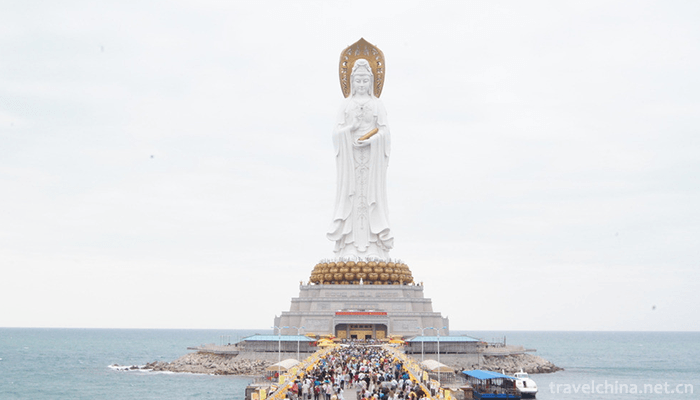


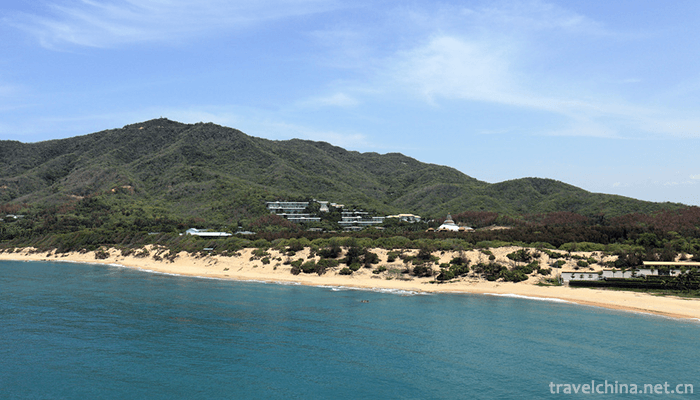
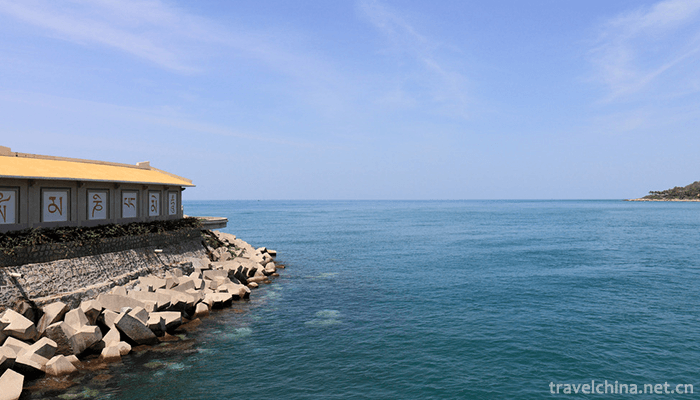
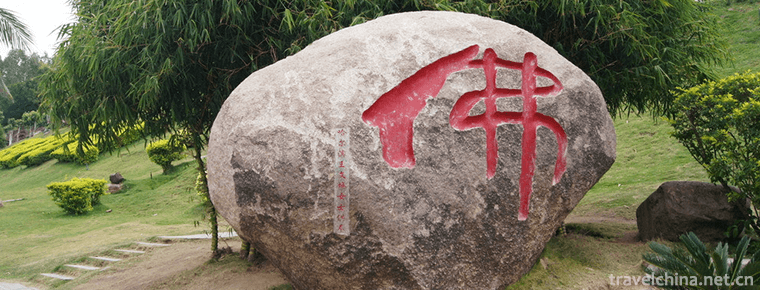
Nanshan Cultural Tourism Zone
-
White cut chicken
White cut chicken, also known as white cut chicken, is the most common dish in Guangdong cuisine. It is a kind of chicken dipping. Its characteristics are simple and easy to prepare, without batching
Views: 262 Time 2018-11-02 -
Vegetable party
Vegetable party (alias Su Chunjuan) is one of the common local traditional snacks in Guiyang. It can be seen almost everywhere in the streets of Guiyang. This dish is crisp
Views: 193 Time 2018-11-05 -
qikongqigong
Qigong (qigong) is a traditional Chinese method of health care, health preservation and disease elimination. Ancient or "Dandao" is a kind of physical
Views: 129 Time 2018-11-13 -
Water Margin City Scenic Area of the Three Kingdoms
The Wuxi Film and Television Base of CCTV is the first large-scale film and television shooting and tourism base in China. Founded in 1987, it is the first theme park in China that combines film and t
Views: 176 Time 2018-12-18 -
Wulong River Scenic Spot
Wulong River Tourism Scenic Area will soon be promulgated as a national scenic spot and a national natural forest reserve. The main river in the scenic spot is Wulong River
Views: 168 Time 2018-12-22 -
Changsha window of the world
Changsha World Window is located on the Liuyang River in the northeastern suburb of Changsha City, Hunan Province. It is a cultural theme park jointly invested by Hunan Radio and Television Media Co.,
Views: 198 Time 2019-03-17 -
Traditional Building Techniques of Beijing Siheyuan
Beijing quadrangle traditional craftsmanship, Beijing local traditional handicraft, one of the national intangible cultural heritage.
Views: 692 Time 2019-04-04 -
Hangzhou Reviews
Hangzhou commentary originated from the Southern Song Dynasty, and has a history of 800 years. It is the most characteristic local traditional folk art in Hangzhou, Zhejiang Province.
Views: 207 Time 2019-05-02 -
Mulan Legend Hua Mulan Legend
Mulan legend is one of the Chinese folklores. Mulan legend began in Sui and Tang Dynasty. It is characterized by the spread of Chinese folk oral language in the early period, and then by the appearanc
Views: 179 Time 2019-06-06 -
Panhu Legend
Panhu and Xinnu myths and legends are abbreviated as Panhu legends. They originated in Luxi County, Xiangxi Tujia and Miao Autonomous Prefecture, Hunan Province. They are the main contents of Panhu cu
Views: 246 Time 2019-06-08 -
Bozhou University
Bozhou College (Bozhou University), for short, is located in Bo Yuan. Anhui Province Bozhou City By the state Ministry of Education Approved full-time full-time undergraduate institutions.
Views: 175 Time 2019-11-08 -
Guangan Airlines
There is no airport in Guang'an, but there are many airports around it. At the same time, Guang'an terminal building of Chongqing Jiangbei International Airport has been built in the urban area. Guang'an is 110 kilometers away from Chongqing Jian
Views: 185 Time 2020-12-19
